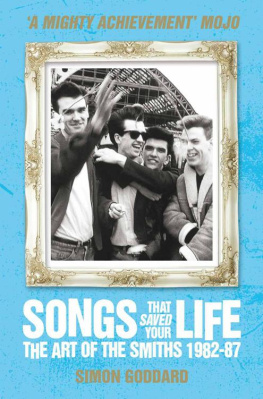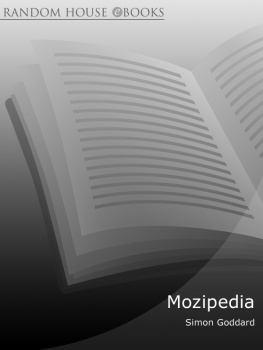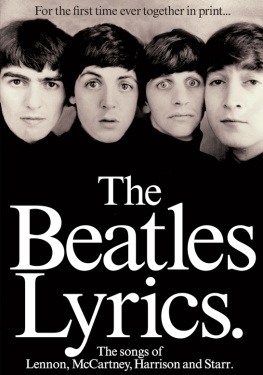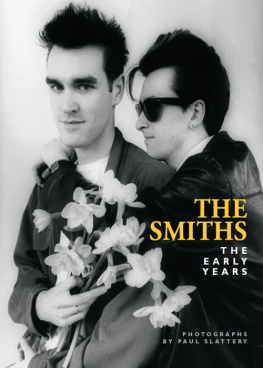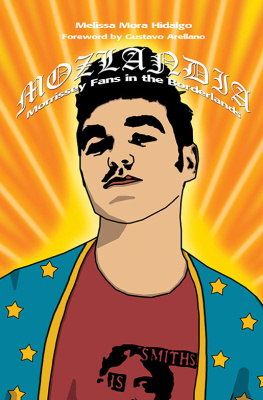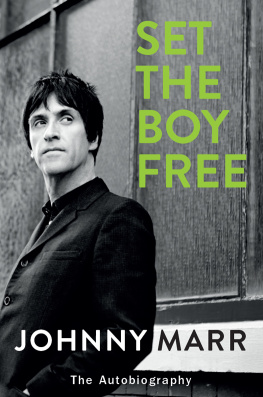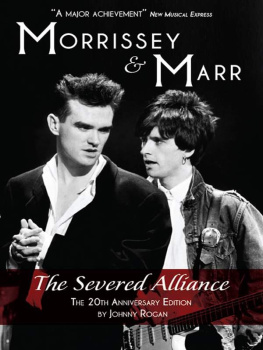
SONGS THAT SAVED YOUR LIFE
THE ART OF THE SMITHS 1982-87
SIMON GODDARD
TITAN BOOKS
SONGS THAT SAVED YOUR LIFE
Print ISBN: 9781781162583
Ebook ISBN: 9781781162590
Published by Titan Books
A division of Titan Publishing Group Ltd.
144 Southwark St.
London
SE1 0UP
First published by Titan February 2013
Simon Goddard 2002, 2004, 2013
No part of this publication may be reproduced, stored in a retrieval system, or transmitted, in any form or by any means, without the prior written permission of the publisher. Names, characters, places and incidents featured in this publication are either the product of the authors imagination or used fictitiously. Any resemblance to actual persons, living or dead (except for satirical purposes), is entirely coincidental.
A CIP catalogue record for this title is available from the British Library.
10 9 8 7 6 5 4 3 2 1
What did you think of this book? We love to hear from our readers. Please email us at:
CONTENTS
FOREWORD
For the most part products are disposable, but just for that extra one song that changes your direction in life, the importance of popular music just cannot be stressed enough. Music is the most important thing in the world.
MORRISSEY
Y ou hold in your hand a book which, in skeletally crude form, was first published in 2002 under the title The Smiths Songs That Saved Your Life. That apologetic prefix was its original publishers decision, not my own. The fact that it is now, as Id always intended, a work about the art of The Smiths called simply Songs That Saved Your Life is as symbolic an indication I can offer that this is as close to the book I first wished it to be.
Returning to it a decade later, I was inevitably rattled by the sensation Nabokov expressed in reviewing an earlier novel and feeling nothing but an impatient shrug for the bungling apprenticeship of [my] youth. Smiths fans and critics have said some incredibly kind things about Songs That Saved Your Life but, authors ever their own harshest judges, I saw only the flaws: many, textually, my own fault; others, visually, most definitely not. So between such self-flagellation, the ache of professional vanity and the madmans twitch of perfectionism, I have done my best to sweep away the detritus, make clear what was once opaque and varnish that which needed recoating whilst resisting the temptation to strangle the sincere spirit of the original as I first presented it.
And sincere is definitely the word. This book was written by an unapologetic Smiths apostle, first and foremost, who wanted to voice their passion for the group theyd loved since their teens; a group they felt had been long misunderstood, trivialised and ignored by the smelly pop-loathing, chin-stroking keepers of the so-called pantheon. I chose to do that not by telling the story of the band, in all its intrigue, mystery and skeleton-rattling secrecy, but the story of their songs in all their inarguable brilliance, magic and beauty. And just to drive that point home as hard as I could upon the cold deaf ears of artless philistines and joyless snobs I used the format of a critically sacrosanct book about The Beatles a fact which annoyed at least one early reviewer. Mission accomplished.
Many years later, I would write another related book on the subject, Mozipedia The Encyclopedia Of Morrissey And The Smiths, a task which forced me to again confront and describe the groups repertoire anew. In doing so, being older and only a little wiser, I believe I expressed myself more poetically and with an eye twinkling ever brighter than the younger histrionic martyr trembling in the parenthesis of the original edition of Songs That Saved Your Life. But I digress. As nothing more nor less than an earnest little book about the greatest pop group that ever lived, it gives me great pleasure to resole my first footing in the hope of granting it a new, improved lease of life.
To be specific: the main song/studio chronology is now uninterrupted with the relevant live, radio and TV appearance details excised and compiled into respective appendices; fiddly footnotes have been dispensed with and integrated into the text where relevant; so too the previous pointless song-numbering system; and both the prologue and epilogue have been radically refashioned in keeping with my absolute belief that the discussion of any great work of art should never be dulled by the stale repetition of accepted historical clich.
There is, I confess, a sliver of my psyche that could write a different version of this book every year for the rest of my life, forever finding something new (and possibly increasingly abstract) to say about The Smiths and their art. But caution reminds me of the great critic Ernest Newman and his life-consuming love of Richard Wagner. On his deathbed, aged 90, Newman asked to hear records of Wagners opera Parsifal . With his last breaths, he apparently croaked, I must get well, you know some new ideas about Parsifal have just occurred to me. Replace Parsifal with The Queen Is Dead and my own potential fate is all too terrifyingly obvious.
I started writing Songs That Saved Your Life as I approached the age of 30. I conclude this the day before I turn 40: as good a time as any to pack up my inkwell and shuffle out of Smithdom for pastures new. But wherever that is, a part of me shall always remain there. For The Smiths will always be the band of my life, and theirs the songs that saved it.
Simon Goddard
20 December 2011
PROLOGUE
Its A Miserable Life
A personal phantasmagoria of the beginning of The Smiths
When the gods wish to punish us, they answer our prayers.
OSCAR WILDE
H ow to start the story of The Smiths? With Once upon a time? With In the beginning? Or with
Knock, knock. Whos There? Johnny. Johnny who? Johnny whos about to change your life, my life and the history of pop music.
This is the story of The Smiths as has been told and retold. A fairy tale. A holy gospel. And a knock, knock joke.
The year is 1982. The time, around one oclock on an early summers afternoon. The place is Manchester. The door is that of 384 Kings Road in Stretford. The one doing the knocking is Johnny Marr. On the other side of the door is Steven Morrissey. The two have never properly met but in another few seconds the door will open and the two cells of The Smiths will irreversibly fuse as one and multiply to become the most beautiful organism in the history of popular music.
Think of it as the creationist myth of The Smiths as opposed to the evolutionary reality. That, in truth, The Smiths existed long before Johnny Marr knocked on Morrisseys door, born as destitute emotions many years previous. In the late night echo of a typewriter clicking in a Stretford semi bedroom. In staring at sodium light through the condensation on a window pane as Iggy sings his blues. In the dread that consumes the spirit as it nears the school gates. In the distant slamming of doors and raised voices. In the skipping of a heartbeat to the crackle of But, oh thank God, at last and finally! In the endless waiting for the postman. In the first blisters from a fretboard. In letters of rejection and playground ridicule. In winter nights forever sprinting home from the hooligans grasp. In second-hand paperbacks and postage stamps. In record racks and clothes rails. In grey skies and wet cobblestones. In all human existence exemplified by three minutes of sound on seven inches of plastic. In that long walk home in the rain once too often. These were the latent molecules of Smithdom already embedded in Morrissey and Marr, attracting some, repelling others, yet to find their perfect chemical balance until the two were united.
Next page
